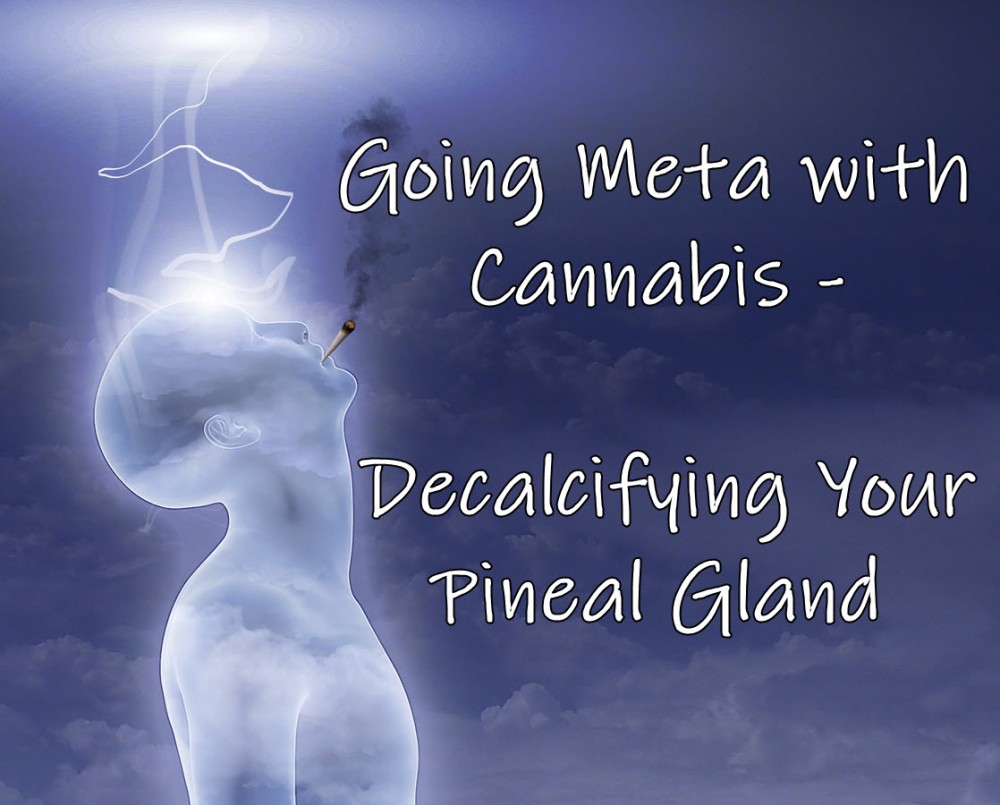How Medical Marijuana Affects the Pineal Gland

The pineal gland is most likely one of the more misunderstood glands in the brain. Not that deciphering the and all its functions an easy task is. But for eons, the pineal gland has a mystic aura surrounding it. It is often thought to seat spirituality and consciousness. It is true the pineal gland, also known as the third eye, responds to psychedelics. With this in mind, how would medicinal cannabis affect this gland?
But why does the pineal gland have such an effect on so many through the ages? Does it have mystical powers? I don´t know if we would ever be able to quantify such thoughts, as there is no clear way to separate mind, spirit, and body other than death. But we can look at how cannabis in a more scientific way affects this important gland in our brain.
What is the Function of the Pineal Gland?
Scientifically, the pineal gland has 5 functions known. Of course, there is no way to fully understand how it works, but this pea-shaped gland is known to produce and regulate some hormones, where one of them is melatonin. Melatonin is most known for the role it plays in regulating sleep patterns, or circadian rhythms.
The pineal gland also plays an important role in the regulation of female hormone levels. It is presumed to affect fertility and the menstrual cycle due to the melatonin produced and excreted by the pineal gland. Further studies also showed that there are more functions. These functions include:
Pineal Gland and Melatonin – when you have trouble sleeping, it could be that the pineal gland is not producing enough melatonin.
Pineal Gland and Cardiovascular health – research show that there is a correlation between cardiovascular health and melatonin. Melatonin production by the pineal gland has a positive effect on heart health and blood pressure.
Pineal Gland and Female Hormones – evidence incline that light exposure and related melatonin levels may have an effect on a woman´s menstrual cycle. Reduced amounts of melatonin might play a role in the development of irregular menstrual cycles.
Pineal Gland and Mood stabilization – The size of your pineal gland might indicate your risk for certain mood disorders. A lower pineal gland volume may increase the risk of developing schizophrenia and other mood disorders.
Pineal Gland and Cancer – an impaired pineal gland function could lead to higher cancer risk. More research has to be done on this aspect.
What makes the Pineal Gland so Unusual, and what happens when it malfunctions?
The gland is made up of cells known as pinealocytes. In some non-mammal vertebrates, these cells respond directly to light. This ability makes them very similar to the cells of the retina. In some fossil species, scientists have found holes just like eye sockets in the center-rear part of the skull, which allowed the pineal gland to receive light directly, just like the eye.
In mammals, the pinealocytes are directly linked to the retina itself. This is necessary to regulate circadian rhythms. The pineal gland also, unlike much of the brain, is not separated from the rest of the body by the blood-brain barrier. It receives abundant blood-flow directly from the posterior cerebral artery. This could have an influence on the receptiveness of psychoactive substances.
Malfunctions – when the pineal gland is impaired, it leads to a hormonal imbalance. This can affect other parts of your body. Sleep patterns are often disrupted and can show up in disorders such as jet lag and insomnia. A pineal gland tumor could also affect other parts of the body. Symptoms of a pineal gland tumor are:
Seizures
Disruption in memory
Headaches
Nausea
Damage in vision and other senses
Cannabis and the Pineal Gland
The pineal gland has a functional endocannabinoid system. Both CB1 and CB2 receptors, as well as the endogenous ligands that bind them, anandamide, and 2-AG, are present. The activity of the CB1 receptors varies according to a daily cycle. The lowest activity occurs at the end of the daylight period. The enzyme responsible for synthesizing new endocannabinoid molecules, NAPE-PLD, gets reduced during the middle of the dark period.
THC’s endogenous analog, anandamide, is fundamentally involved in pineal gland function. Lower levels of anandamide, or THC, are needed for melatonin levels to increase. When THC is taken together with CBD and certain terpenes, it works in synergy to produce more sedative effects. Together they stimulate the pineal gland to release melatonin.
The pineal gland is connected to the endocrine system and the endocannabinoid system. As part of the network of cannabis influence, it helps the flow of cannabinoids to the cannabinoid receptors. The cannabinoids help to regulate the depth and duration of your sleep.
Afterthought
We are far from understanding the complexity of the brain and the effect that cannabis has on it. But the endocannabinoid system is a fundamentally important messaging system that links together various parts of the brain. It is also clear that the cannabinoids in cannabis effectively works together with the endocannabinoid system.
PINEAL GLAND AND MARIJUANA, READ MORE...
DECALCIFY YOUR PINEAL GLAND WITH CANNABIS? READ THIS!






